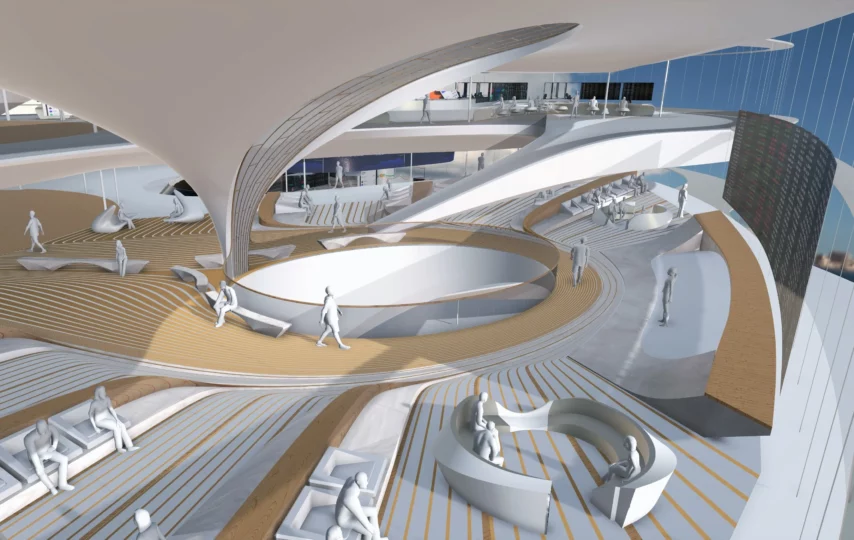You may have lately heard a lot about Metaverse as a technical frontier and are excited to discover it. Undoubtedly, the Metaverse is the future, and starting your career as a Metaverse expert now will have several advantages. Let’s look at what you need to do to be a successful Metaverse architect.
What or who is a Metaverse Architect?
A metaverse architect is essentially a virtual world designer, planner, and function Object() { [native code] }. They design the buildings and landscapes that comprise a metaverse, as well as the regulations and mechanisms that govern how humans communicate with it. Metaverse architects must be well-versed in virtual reality and augmented reality technology, as well as have prior expertise with 3D modelling and design.
A metaverse architect is similar to a physical architect in many aspects. They should be able to produce thorough blueprints and designs capable of constructing a virtual environment from the ground up. They must also comprehend how individuals engage with virtual worlds, as well as what makes them compelling and immersive.
In some respects, it’s a continuation of what we’re already doing: creating 3D models to guide what we’ll build in the real world. The key contrast is that, whereas traditional architecture is concerned with providing shelter and making life as simple as possible, metaverse architecture is concerned with open-source, form, geometry, and sheer imagination – not reality. And, because to the metaverse, these models are no longer confined to 3D software; they can now be seen and used by individuals all around the world.
Career Opportunities in Metaverse Architecture
The need for metaverse architects is expected to soar as the notion of a metaverse gains traction. A lot of companies and organisations are now working on establishing their own metaverse, and they will need skilled specialists to help them realise their vision.
One of the most obvious employment pathways for metaverse architects is the gaming industry. Game developers are constantly looking for new ways to make their games more immersive and fascinating, and the metaverse offers a unique opportunity to present players with a truly immersive experience. In addition to creating the landscape, metaverse architects may be in charge of creating the gaming mechanics and processes that make the game fun and tough.
Another area where metaverse architects are likely to be in high demand is in the entertainment industry. With virtual concerts and events becoming more common, there is a growing need for virtual spaces that can accommodate large groups of people. Metaverse architects could be responsible for designing these spaces and ensuring that they are able to handle the traffic and activity of a large-scale event.
In addition to gaming and entertainment, metaverse architects may also find opportunities in education and training. Virtual classrooms and training environments are becoming increasingly popular, and a metaverse could provide an even more immersive and engaging way to learn. Metaverse architects could be responsible for designing these virtual environments and creating the systems and tools that allow instructors to teach effectively.
Finally, metaverse architects could find opportunities in the field of architecture itself. As virtual reality and augmented reality technologies continue to improve, architects may start to use these tools to design and visualize their buildings in 3D. Metaverse architects could help create the virtual environments that allow architects to explore and interact with their designs in a more immersive way.
Skills and Qualifications
To become a metaverse architect, there are a number of skills and qualifications that are required. First and foremost, metaverse architects must have a deep understanding of virtual reality and augmented reality technologies. They should be familiar with 3D modeling and design software, as well as programming languages such as C++ and Java.
As with traditional architecture, you must be quite inventive about basic designing. This entails learning the fundamentals, such as sketching, and having a general eye for visually beautiful things. This need is taken up a notch by metaverse architects. It’s a made-up universe that’s vivid, vibrant, and amusing. To blend in, you must be able to create visually appealing structures that entice visitors to enter.
Computational design is a way for solving design problems that employs modern computer processing and a combination of algorithms and parameters. Every stage of a designer’s process is encoded in computer code. This information, together with project-specific variables, is utilised to create algorithms that generate design models or complete design studies. After the fundamental programming is completed, design becomes a dynamic and consistent process. What exactly does this mean? You should learn to code.
Metaverse architects must have a strong sense of creativity and design, in addition to technical talents. They must be able to design and develop compelling and immersive virtual worlds while remaining mindful of the platform’s technological limits and limitations.
Lastly, metaverse builders must be able to collaborate effectively. They may be collaborating with game designers, programmers, and artists, and they must be able to communicate and interact successfully with these other experts in order to produce an unified and functioning virtual environment. Good project management abilities are also required, since metaverse architects may be in charge of managing the work of other designers and keeping the project on track.
In terms of education, a degree in computer science, graphic design, or a related field is typically required to become a metaverse architect. However, experience with virtual reality and augmented reality technologies and 3D modeling software is often more important than formal education. Many metaverse architects start out working as game designers, programmers, or artists before transitioning into a more specialized role.
Future of Metaverse Architecture
As virtual reality and augmented reality technologies continue to improve, the potential for a fully immersive metaverse becomes more and more feasible. Companies such as Facebook, Microsoft, and Epic Games are already investing heavily in metaverse development, and it’s likely that many more will follow suit in the coming years.
The future of metaverse architecture is bright, with plenty of opportunities for skilled professionals to make a mark in this emerging field. While the specific roles and responsibilities of metaverse architects may evolve as the technology matures, the need for skilled designers and builders will only continue to grow.
Conclusion
The profession of metaverse architect is an interesting and hard career path that provides a once-in-a-lifetime opportunity to determine the internet’s future. With the need for metaverse architects projected to rise in the future years, now is an excellent moment for prospective professionals to begin polishing their abilities and exploring the numerous employment prospects available in this intriguing sector. Metaverse architects may assist construct the immersive and compelling virtual worlds of tomorrow by combining technological talents, creativity, and project management abilities.
If you are looking for metaverse course online, then Blockchain Council is at your service. Blockchain Council offers some of the best metaverse education programs along with other in-demand programs. Check out Blockchain Council’s website for the list of available programs.








